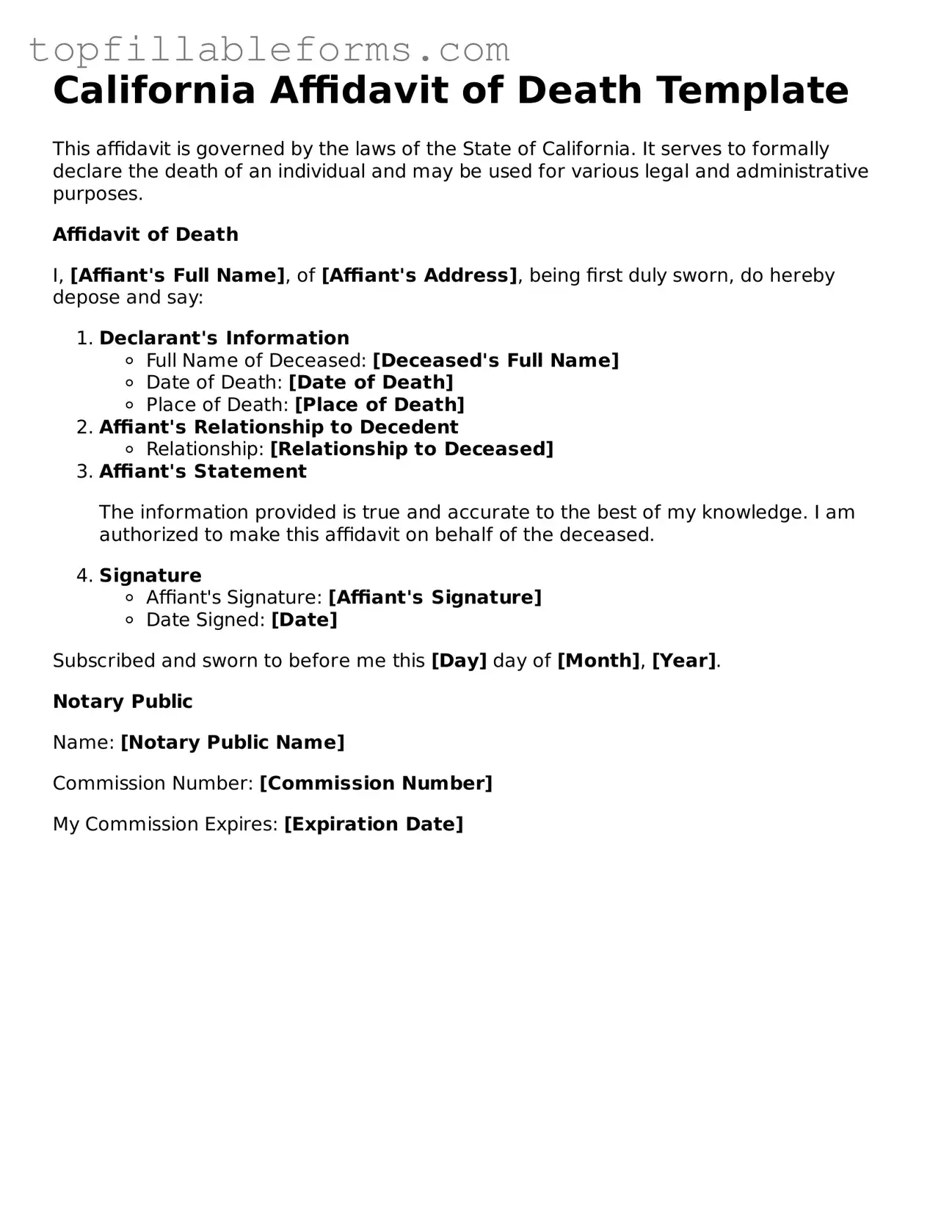Attorney-Verified Affidavit of Death Template for California
The California Affidavit of Death form is a legal document used to officially declare the death of an individual. This form serves as a crucial tool for settling the deceased's affairs, including the transfer of assets and property. Understanding how to properly complete and file this affidavit is essential for those managing the estate of a loved one.
Open Affidavit of Death Editor Here
